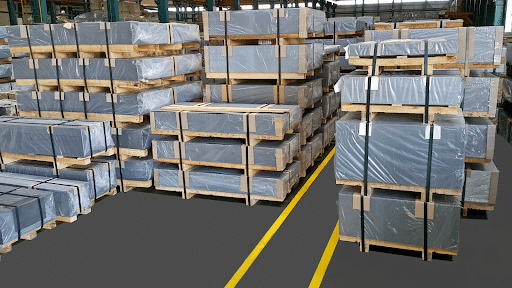When investing in small warehouse management software, your company is committed to automated routing, automated freight planning, streamlined operations, and maximized profits.
But is your company committed to training your employees on how to use the new software?
Adoption of new software can be a challenge. Ensuring that you have trained your employees can almost double the amount of high-quality work you can get from them.
So when you think about implementing new small warehouse management software, you will want to train your workforce on how to properly use it.
Take a peek at our six quick tips when it comes to implementing your small warehouse management software and setting up your employees for the most success possible.
1. Analyze the Costs of Training
Remember that when you purchase small warehouse management software, you may still need to pay for your employees’ transition. Such costs may be up-front and all-inclusive or may be incurred hourly, and there is some potential for lost income during the transition period due to disrupted operations.
Accordingly, it is important to be aware of and consider the all-in cost of new software carefully and make sure you have reasonable expectations.
2. Organize and Create a Training Team
Ideally, you should be able to work with the company that provided your software to inquire about training. Many of them can train your employees directly.
Another option is for your company to create a training team who can receive the education on the new small warehouse management software. Once they’ve mastered the software, they can then pass that knowledge down to the rest of your company’s employees.
While this approach does take more time for onboarding, it provides for less employee confusion in the future by creating “power users” on the team that can give new team members guidance or existing team members training.
If you elect to go with a flatter approach, ensure that your training team is using software solutions like Loom or Vidcast to create a video library of tutorials with the software that your employees can go back to later for reference.
If your software provider offers direct training, where a representative from the software company trains your employees directly, you may benefit from their more detailed and comprehensive knowledge of the software package.
This strategy has the potential to be more expensive, but if your provider offers this type of training on an all-inclusive or flat-rate basis, taking advantage of their expert knowledge can greatly benefit your team, speeding up software adoption and resulting in overall better outcomes for your business
While both routes provide their pros and cons, proceed with whatever option makes the most sense for your company’s operating procedures.
3. Properly Plan Timing of The Training Sessions
If it’s possible, you should try to get your employees trained well before you go live with the small warehouse management software. Further, it is worth exploring if it is possible to begin training before implementation using a demo version of the software before it is fully implemented.
The timing here is important. If you wait too late, you will end up implementing the solution in the middle of a busy time for the company or losing productivity after going live. Also, the implementation could throw off other processes that are currently being worked through at the same time. These factors are important because you don’t want to invest in software that:
- Your employees don’t know how to use, or that…
- Your employees don’t want to use
If you run into this situation and don’t pay close enough attention to the timing of your training and implementation, you could lose out on potential profits as your company struggles to use what you have bought.
4. Utilize Training That Applies to Real-Life Scenarios
When training, it is important that you use real-world scenarios. If you use examples that don’t apply or relate to the daily situations your employees go through, they will be less likely to retain the new information.
Make sure that your employees learn how to use the small warehouse management software quickly by making the purpose and functionality of the new tool relevant to them.
For example, if you are training your full-time drivers and freight carriers how to automate loads for other drivers and project average asset utilization, that may not be time best spent. Instead, that’s the perfect opportunity to show them how they can quickly communicate with dispatch teams to provide updates on route conditions, truck conditions, or customer deliveries.
Also, ensure that sensitive data is not being shared with all employees in the training process. While it’s important to ensure that the training materials for small warehouse management software are relevant to warehouse employees, be careful not to release private data or information that could influence employee interactions and employee morale, such as compensation-related information.
5. Ensure That Your Software is Fully Functioning
Before heading into a training session, double-check with your small warehouse management software provider to make sure your system is fully functional. During training, employees will likely ask questions or ask to be walked through how to navigate the software platform to see:
- Planned loads and routes
- How to optimize loads for routes
- Managing fleet parameters such as per-mile costs or hours of service
- How to access help documents or support teams
- How to manage logins and user accounts
- Running reports and understanding dashboards
There is little worse than getting everybody ready and logged in, only to discover you do not have access to the system you need to train people on.
Remember, though, that equipment is not limited to computers. It also includes whiteboards and pens, paper, or handouts. Prep these things and double-check them the day before; this gives you plenty of time to resolve issues if any come up.
6. Train Your Training Team
As noted above, you can either build a training team or get help from the small warehouse management software provider’s training team directly.
Regardless of the strategy you choose, it’s important to identify key goals for training sessions and educate the training team on those goals. If you plan to have the software provider’s training team handle 100% of the training, make sure you are in agreement with their teams in terms of which features will be the focus of a given training and help them prepare for and anticipate the questions or needs of your employees.
Give your training team a chance to go over what they have ready for you so that you can course-correct them if you see any specific problems. Doing this will help their training align with your needs.
Final Recommendation: Find Small Warehouse Management Software That Provides Training Resources
Are you researching available options for small warehouse management software? Are you concerned about adoption and the amount of training that will be needed to get your employees up to speed?
If you’re searching for small warehouse management software, consider us here at Headlight Solutions. We offer all-inclusive direct training and are experts at getting employees up to speed quickly and efficiently.
We provide the perfect small warehouse management software solution for your company and have training resources to back it up and make the onboarding process as easy as possible.
Request a free demo with us today, and we will be in touch to organize the next steps and help take your company to the next level.




